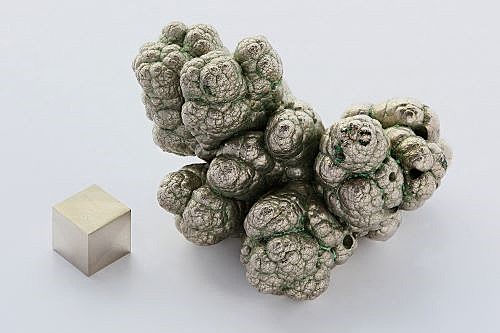Environment: Lithium-ion Battery Recycling
- Sylvia Rose

- Apr 5
- 4 min read
Lithium-ion batteries power many aspects of life including smartphones and electric vehicles. With rapid market growth comes the question of recycling, toxicity and disposal of lithium ion batteries.

While battery power is a cleaner alternative to fossil fuels, end-of-life management raises concerns. Recycling lithium-ion batteries uses two main methods, hydrometallurgy and pyrometallurgy. Direct recycling is a future option.
Rechargeable lithium-ion batteries last about 2 to 3 years or 300 to 500 charge cycles, whichever comes first. Most EV batteries last 15-20 years, with average degradation rate of 1.8% per year.
Hydrometallurgy: Water Treatment & Dissolution
In hydrometallurgy aqueous solutions dissolve and selectively extract valuable metals from shredded battery components. The process begins with dismantling and shredding the batteries.
This is followed by leaching, or submerging the shredded material in a chemical solution, often a strong acid. Leaching dissolves target metals, like lithium, nickel, cobalt and manganese, into the solution.

The next stage selectively separates and purifies each metal using techniques like solvent extraction, precipitation and ion exchange. Each metal is recovered as a pure compound, ready for reuse.
Hydrometallurgy has several advantages. It achieves high recovery rates and purity for multiple metals. It gives precise control over the separation process, enabling recovery of a wider range of materials.
It needs a lot of water, up to 1000 liters per ton of batteries processed. It's energy-intensive due to heating and mixing. Use of corrosive chemicals raises fears about wastewater treatment and environmental contamination.

Pyrometallurgy: Heat Treatment
In pyrometallurgy, a high-temperature process, shredded battery materials are heated in a furnace. This recovers valuable metals like nickel and cobalt, often alloyed with copper or iron.
The alloy is then processed to separate individual metals. Other elements like lithium and aluminum often end up in the slag, a byproduct of the melting process.
Some slag can be used in construction materials but recovery of lithium from slag is problematic and often not economically viable. Pyrometallurgy has lower recovery rates for lithium and other valuable materials.

The high temperatures require major energy input and can release harmful gases, contributing to air pollution. By-products such as ash can contain toxic metals.
Despite its drawbacks, pyrometallurgy is often simpler and more cost-effective than hydrometallurgy for large-scale operations.
Direct Recycling
Direct recycling is gains traction as a more sustainable and efficient alternative. This method attempts to minimize chemical processing and energy consumption by directly reusing or repairing battery components.
In direct recycling the battery is dismantled and each cell carefully inspected. Usable cells are repurposed, while damaged cells are processed to recover their individual components like electrodes and electrolytes.

Recovered electrode materials can be directly reprocessed into new electrodes. Environmental benefits include lower energy consumption, fewer greenhouse gas emissions and reduced reliance on virgin materials.
The approach needs careful sorting, testing, and quality control to ensure performance and safety of repurposed components. The process is more labor-intensive and limited by availability of consistent battery designs.
Toxic Components & Waste Disposal
Lithium-ion batteries contain several toxic components, including:
Heavy Metals: Nickel, arsenic, cobalt, lead and manganese, while valuable, are also toxic heavy metals. They can contaminate soil and water with risks to human health and ecosystems.

Electrolytes: Electrolytes used in lithium-ion batteries may be flammable and corrosive. They can release toxic gases, such as hydrofluoric acid, upon decomposition, a serious respiratory hazard.
Organic Solvents: Organic solvents used in electrolytes are volatile and can contribute to air pollution. Some solvents are also carcinogenic.
Improper disposal of lithium-ion batteries as in landfilling or incineration can release toxic substances into the environment. Landfills leach heavy metals into groundwater, while burning emits toxic fumes into the air.

Recycling processes themselves can generate toxic waste. Hydrometallurgy can produce acidic wastewater containing dissolved metals and organic solvents. Pyrometallurgy slag contains heavy metals and air pollutants.
Lead, cadmium and cobalt pose serious health risks if released into the environment. Contaminants from batteries travel hundreds of feet from disposal sites, endangering ecosystems and public health.
Regulations & Innovations in Recycling
Many countries implement regulatory frameworks. The European Union has introduced laws requiring manufacturers to recycle batteries, pushing them to take responsibility for their products.
Innovation in recycling technology continues to advance. Researchers explore new techniques, including biotechnological methods using microbes for metal extraction from battery waste. These methods could develop safer alternatives.

READ: Lora Ley Adventures - Germanic Mythology Fiction Series
READ: Reiker For Hire - Victorian Detective Murder Mysteries


